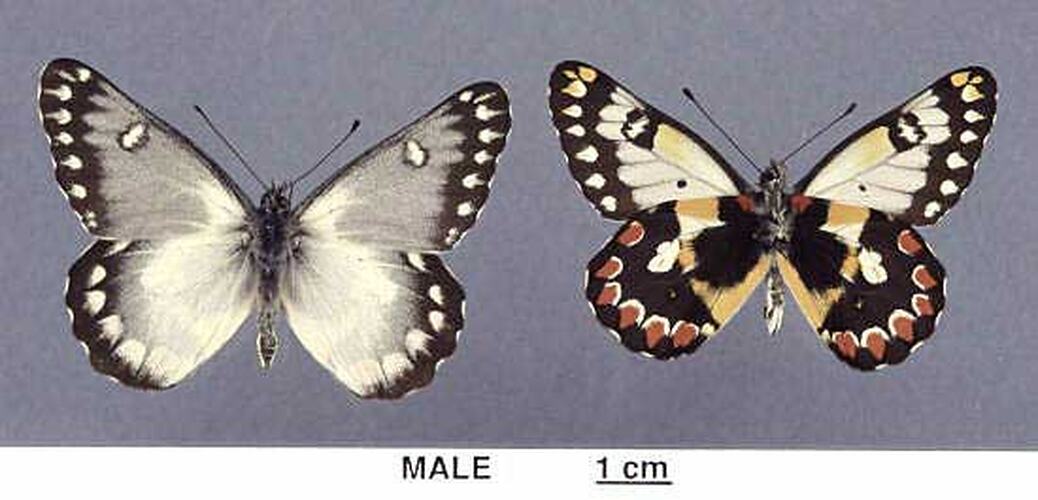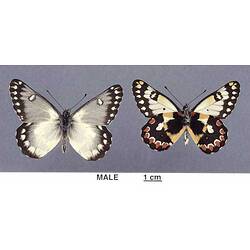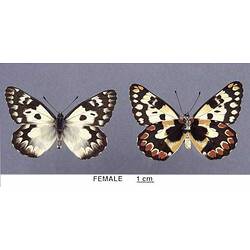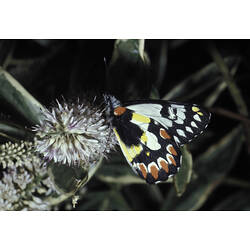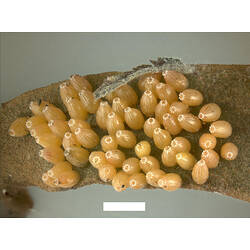General Description
Above: black and white with a grey forewing (male) or cream forewing (female). Below: red and yellow spots on the hindwing. Hindwings without tails. Antennae clubbed. Wingspan up to 7 cm.
Biology
These butterflies are common in summer. They breed on mistletoe plants. Male butterflies patrol around the tallest trees on the hills and ridges, waiting for the arrival of newly emerged females so they can mate with them. Eggs are laid in clusters. The young caterpillars feed on mistletoe leaves together during the day, but more mature caterpillars spread out to feed. Cocoons (pupae) resemble bird droppings.
Distribution
Eastern and western mainland Australia.
Habitat
A wide range of habitats where mistletoe plants grow from wet heathland to mallee.
More Information
-
Animal Type
-
Animal SubType
-
Brief Id
The bright red spots in its name can be found on the underside of the hindwing, along with some splashes of yellow.
-
Colours
Brown, Black, White, Yellow, Red
-
Maximum Size
7 cm
-
Habitats
Wetland, Urban, DryForest, WetForest, Woodland, Mallee, Grassland
-
Diet
Nectar
-
Endemicity
-
Commercial
No
-
Conservation Statuses
CITES: Not listed, FFG Threatened List: Not listed, DSE Advisory List: Not listed, IUCN Red List: Not listed
-
Plants
Mistletoe vines
-
Flight Start
August
-
Flight End
May
-
Taxon Name
-
Scientific Author
(Donovan, 1805)
-
Common Name
Red-spotted Jezebel Butterfly
-
Other Names
Wood White , Wood White Butterfly , Spotted Jezebel
-
Kingdom
-
Phylum
-
Subphylum
-
Class
-
Subclass
-
Superorder
-
Order
-
Suborder
-
Superfamily
-
Family
-
Subfamily
-
Genus
-
Species Name
aganippe
